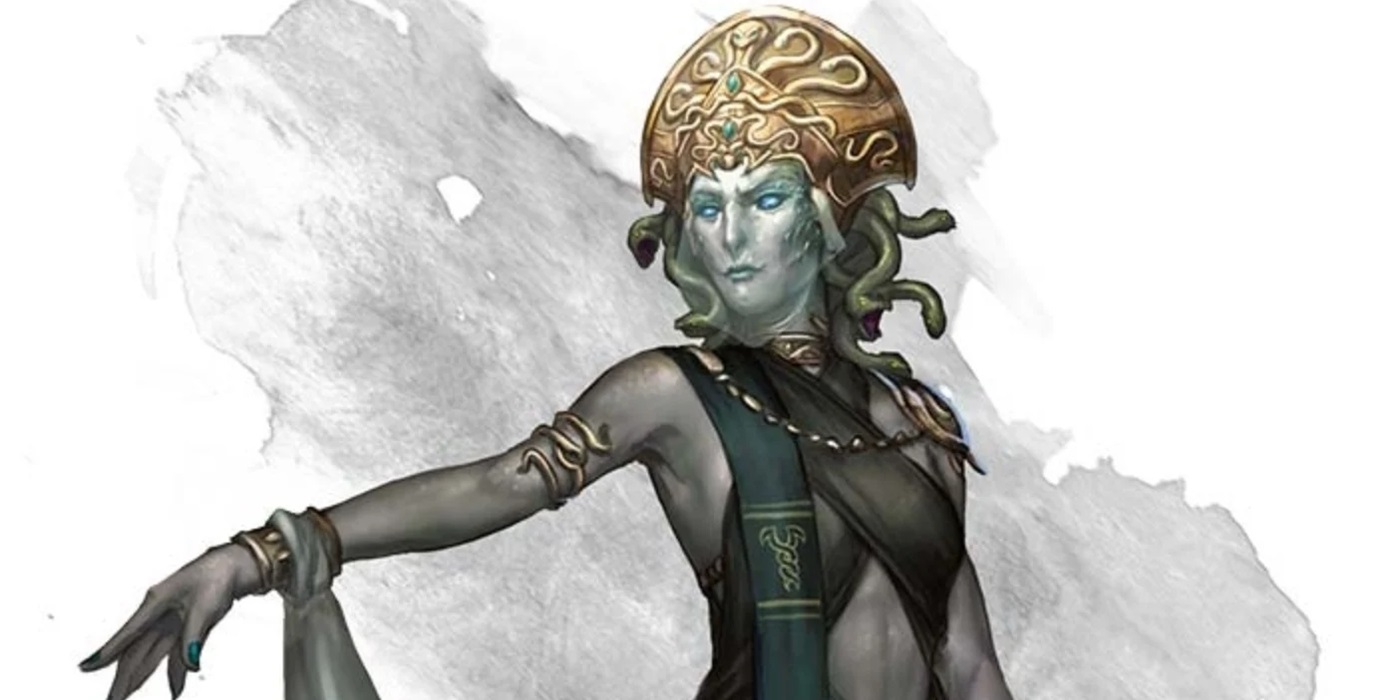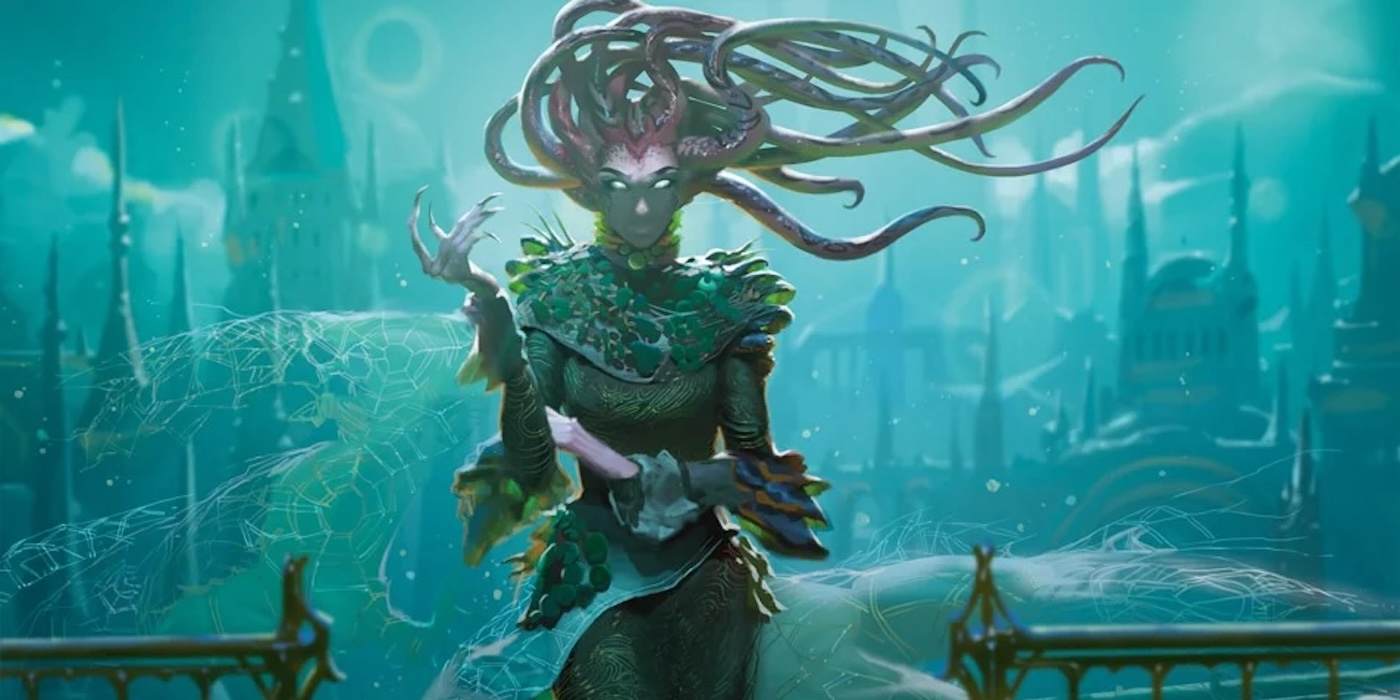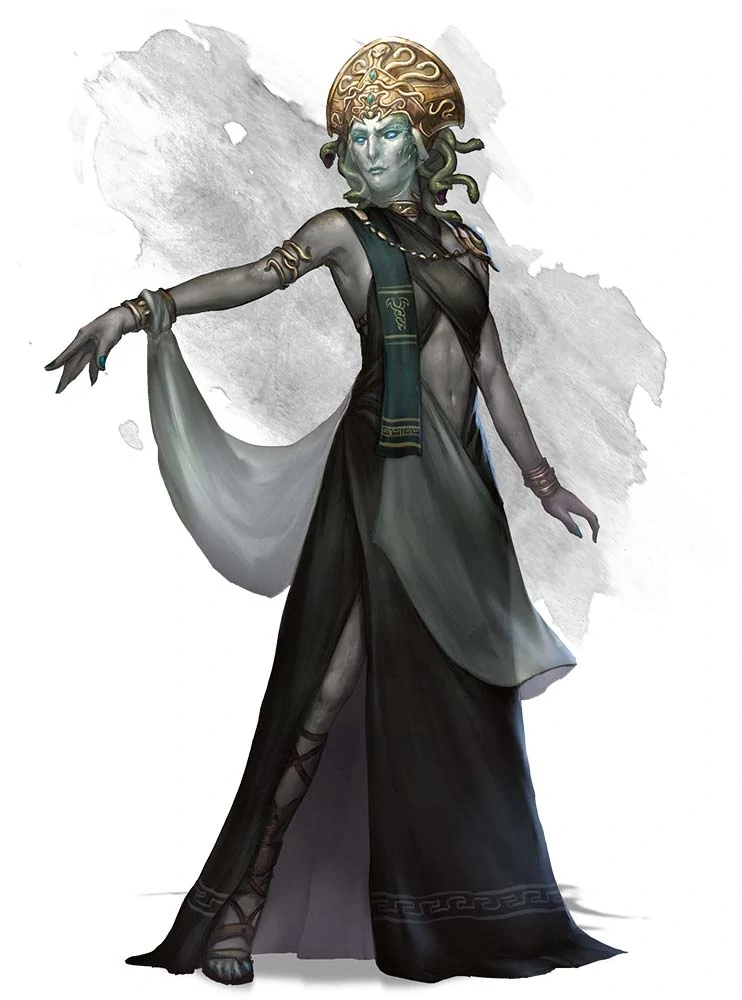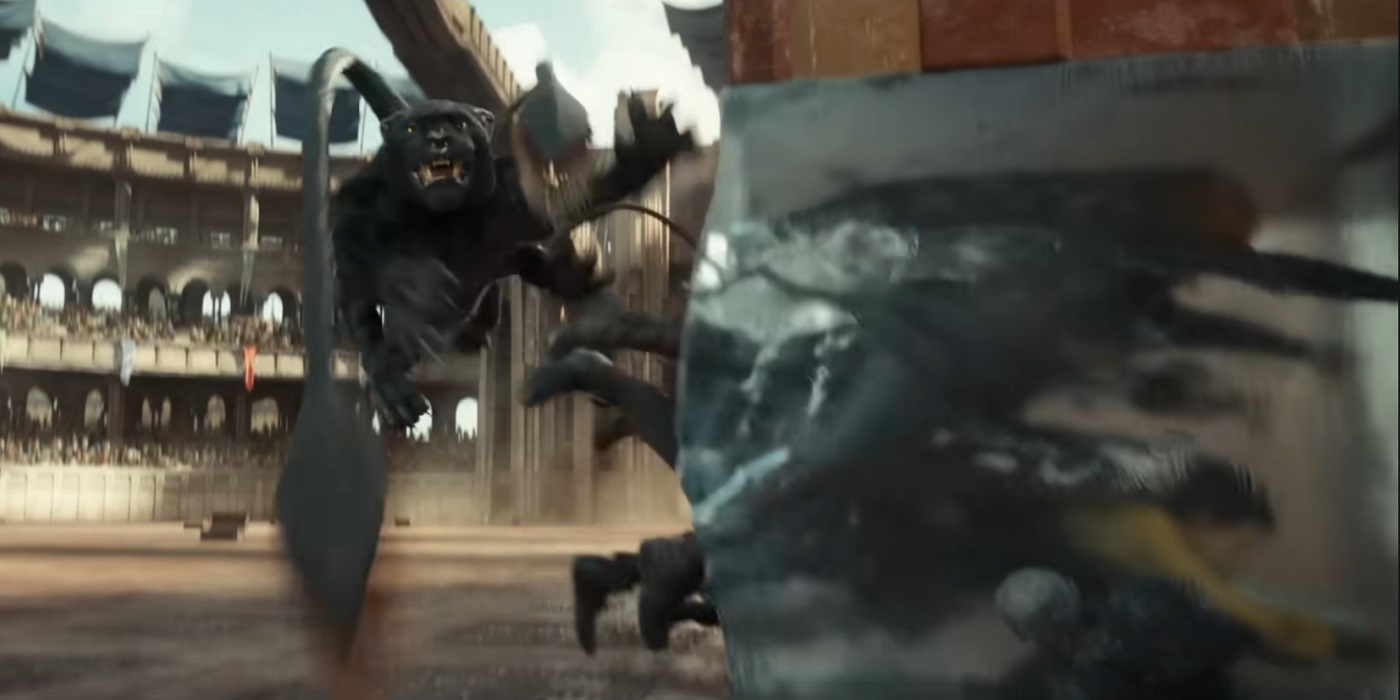From Mythology to D&D Monster, Medusa Has a History That’s (Rock) Solid

If you let a Medusa get too close, it may be best to strike an interesting pose you’re happy to be stuck in forever.
You are almost assuredly familiar with Medusa. One of the three Gorgon sisters from Greek Mythology, Medusa hair was made of snakes and all those who gazed into her eyes would immediately turn to stone. Hers is one of the most famous myths from the ancient world, and one with many, many modern interpretations.
So it’s not surprising that this classic monster was rethought and rewritten to fit into the realms of Dungeons and Dragons. How does D&D Medusa compare to the original myth? And how can your party survive an encounter with the Gorgon? Let’s discuss.
Medusa of Myth
The legend of Medusa dates back to ancient Greece. She, along with Stheno and Euryale were the three Gorgons; children of the sea god, Phorcys and Ceto. The Gorgons are often depicted as monsters with wings, claws, scales, and snakes for hair. They were said to guard an entrance to the underworld and could turn people to stone just by looking at them.
In other versions, Medusa was originally a beautiful young woman who had an affair with Neptune (also known as Poseidon) in Minerva’s (also known as Athena) temple and was turned into a monster by Minerva. Sometimes this “affair” is consensual, other times it’s an assault. The different tellings shift Medusa between a monster and a tragic figure.
Medusa was slayed by Perseus, sent on the mission by King Polydectes. The various gods helped Perseus on his quest, Athena by giving him a shield with a mirror finish, Hermes by giving him winged sandals, Hephaestus with a sword, and Hades with the helm of invisibility. Perseus used these gifts to looking in the reflection of the mirror to find her and cut off her head. Once beheaded, Chrysaor and the winged horse, Pegasus sprang out of her body.
We will take a closer look at Medusa’s portrayal in D&D over the years. But she is also a popular mythological figure to feature in modern stories and art. Monsters that turn people to stone aren’t terribly uncommon, and neither is the imagery of a figure with snakes for hair.
First Edition
First edition has both Medusa and a Gorgon listed as monsters. The Gorgon is more of a bull-like creature while Medusa is pretty classic Medusa. But there is ALSO a Minotaur. So while these are all drawn from real-world mythology it also feels like D&D is often doing its own thing. This “hateful humanoid creature” lives in caves and tries to trick unknowing victims to look into her eyes. Creatures within three feet who met Medusa’s gaze will turn to stone unless they succeed in a saving throw.
Second Edition
Now Medusa’s gaze is effective for up to thirty feet, but she has even more ways to attack your party. If you’re within a foot of her, her hair can bite and possibly bite the victim adventurer. And for good measure, she often carries a knife and bow. She also isn’t bit on trophies, not often keeping petrified foes in her dwelling. Unless they look like very interesting statues, then they’re art and can stay. 2E also introduces the Medusa Maedar, which is basically a male version of the Medusa without a petrifying gaze. Which… why? What’s the point?
Third Edition
Medusas can be found in every climate, some even living in big cities and joining the criminal underworld. A gang of them could be responsible for a ring of robberies or smuggling operations. She still has a petrifying gaze that will turn a person to stone from thirty feet, but she tries to lie and bluff to claim that she doesn’t have these powers and that there is no danger. Which is probably pretty necessary in the criminal underworld.
Fourth Edition
Fourth Edition gives us more Medusa options than we probably need. All female Medusas have the standard gaze-to-stone ability. But now there are Medusa Archers, Medusa Shroud of Zehir—who use fangs of death in addition to a sword and their petrification—and A Medusa Warrior. The Warrior is their male counterpart, who still doesn’t have petrifying powers. Instead, his gaze is venomous. And of course, he’s armed with very many weapons as a warrior.
Fifth Edition
In 5E Medusahood is a punishment for those sacrificed to demon lords in order to have enteral youth and beauty. Ironically, a Medusa is susceptible to its own gaze, so they can never look into a mirror at their own beauty or else they will turn themselves to stone. A Medusa’s home doesn’t typically have many reflective surfaces.
Is Medusa Good or Evil?
Historically, Medusa is generally seen as a monster and as evil. But some other versions of the story will paint her as more of a victim, and sometimes as one who is punished for what was done to her. It’s hard to say if this is a more modern interpretation because some classic Greek art will depict Medusa somewhat sympathetically. But in the story of Perseus at least, she is portrayed as a monster.
Why Could Medusa Be Killed?
Medusa was the only one of the Gorgons to be mortal, and could therefore be killed.
Have you ever encountered Medusa in any of your D&D adventures? How did your party fare against the mythological monster? Which retelling or interpretation of the myth is your favorite? Let us know in the comments!











